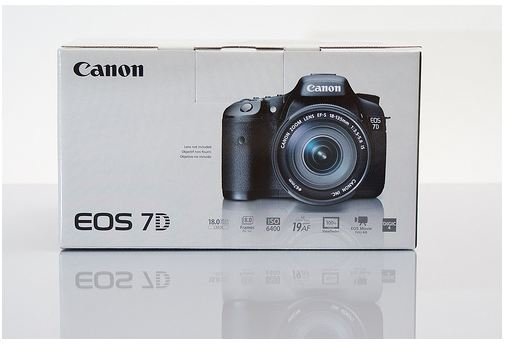Learning How to Read Digital Camera Details
Introduction
When shopping for a new digital camera, it can be confusing looking at all the details and many specifications. We will cover the important technical details and features you should compare when selecting your next camera. Another important thing to compare and consider when choosing your DSLR is the ergonomics of the camera. Choose one that is most comfortable to hold.
Photo by .dr4gon
Camera Details
Resolution - This is the number of megapixels that the camera has. All modern cameras have plenty of megapixels (MP). Even if you print at large sizes, 10-12 MP is more than plenty. A higher resolution (more megapixels) is not always better as it can introduce more noise and degrade image quality.
Sensor Size and Focal Length Multiplier - The sensor size is what sets digital SLRs apart from point and shoot digital cameras. DSLRs come in several sensor sizes including the micro Four Thirds system with a 2x focal length multiplier, APS-C with a 1.5x or 1.6x multiplier, APS-H with a 1.3x multiplier, or full frame (35mm) with a 1x multiplier. As you can see, the multiplier increases as sensor size decreases. The multiplier is the factor at which you multiply your focal length used to obtain a 35mm equivalent.
How is this useful? This means that DSLRs with slightly smaller sensors can use cheaper and lighter lenses to obtain equivalent 35mm focal lengths!
Lens Mount - Each manufacturer has their own lens mount and can only utilize lenses of this particular mount unless an adapter is used. For example, Canon cameras use the EF and EF-S mount, Nikon cameras use the F mount, Olympus and Panasonic use the Four Thirds Mount, and Sony uses the Alpha A mount.
ISO Capabilities - ISO is how sensitive the camera is to light. Better cameras perform better in low-light as they have a better signal-to-noise ratio. One of the factors what really sets modern SLRs apart is not their resolution but their high ISO capability.
Autofocus - Advanced and multi-point autofocus capabilities are utilized when shooting fast-action sports where focus on fast-moving objects is critical. The more focus points a camera has, the more expensive it will be.
Frame Rate - Frame rate is recorded in frames per second (fps). It is the number of consecutive images that can be taken in one second. A higher rate will allow you to take many images in a row creating a sequence. This is especially useful in fast action moving sports. By taking a burst of images, you increase the success rate of number of keeper images.
X-Sync Speed - X-sync speed or flash sync speed is the fastest shutter speed that the camera can use to fully expose the sensor when flash is used. Most cameras have a flash sync speed value of 1/160 to 1/250 of a second. This is particularly useful to minimize ambient light when using off-camera flash.
Camera Features
Camera Features
In our previous section, we covered harder camera specifications. In this section, we break down some of the added features on current DSLR models.
Storage Type - This is the format of media that the camera can record to. Most cameras record to either CompactFlash or SD cards, sometimes both for high-end cameras.
Movie Mode - Some of the modern DSLRS allow you to shoot pro-quality HD video. Not all of them shoot identical resolutions (1080p or 720p) or frame rates (24p, 30p, or 60p).
Viewfinder Specifications - This value determines how accurate the viewfinder you look through will result in your picture. A coverage of 100% means that everything you see in the viewfinder will be in your frame. Viewfinder magnification determines how big an image will appear in the camera given a certain focal length. This is where things get complicated and you should compare viewfinder coverage and magnifications across similar sensor sizes.
LCD Size and Resolution - LCD size obviously measures the size of the LCD. Resolution however is the number of pixels in the LCD. An LCD with a higher resolution (921k vs 230k) will be much sharper and look better. Some newer cameras, like the Canon T2i have a 1,040k dot resolution to easily review your images.
Lens Details
Aperture - The “f-stop” number of the lens. The aperture is the diameter of the opening of the lens. A lower f/ number has a wider opening to let more light in. The lower the number, the better the lens and also more expensive. Zoom lenses have apertures no wider than F/2.8 due to the optics involved in fast zoom lenses. Aperture is used to control your depth of field. A lower f-stop will have less DOF.
Focal Length - Focal length determines how wide or tele a lens is. It is the field of view (FOV) the lens covers. If it is a single length, it is called a prime lens. If it is a range, it is a zoom lens. A smaller number covers a wider FOV, and a larger number covers a smaller FOV (gets you closer to your subject).
Minimum Focusing Distance (MFD) - This is the shortest distance at which the lens will focus. Macro lenses allow you to focus. If you are working in tight spaces, you should look for a smaller MFD to keep your subjects in focus.
What is EXIF?
First off, EXIF stands for “Exchangeable Image File Format.” EXIF is the metadata attached to every image created from a digital camera. It records all the settings used by the camera to take an image including information about the camera model, focal length of the lens, aperture, shutter speed, ISO setting, flash, date and time, and GPS location if your camera supports geotagging. It is particularly useful in recalling camera settings and seeing what settings were used on other photos. Some online photo-sharing sites like Flickr, display this data on the picture’s page.
